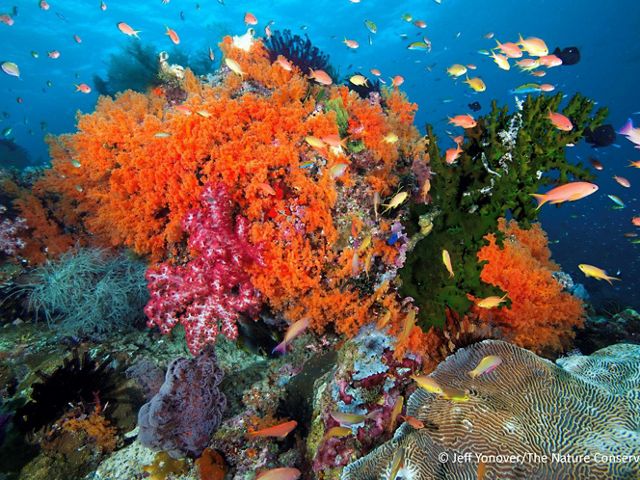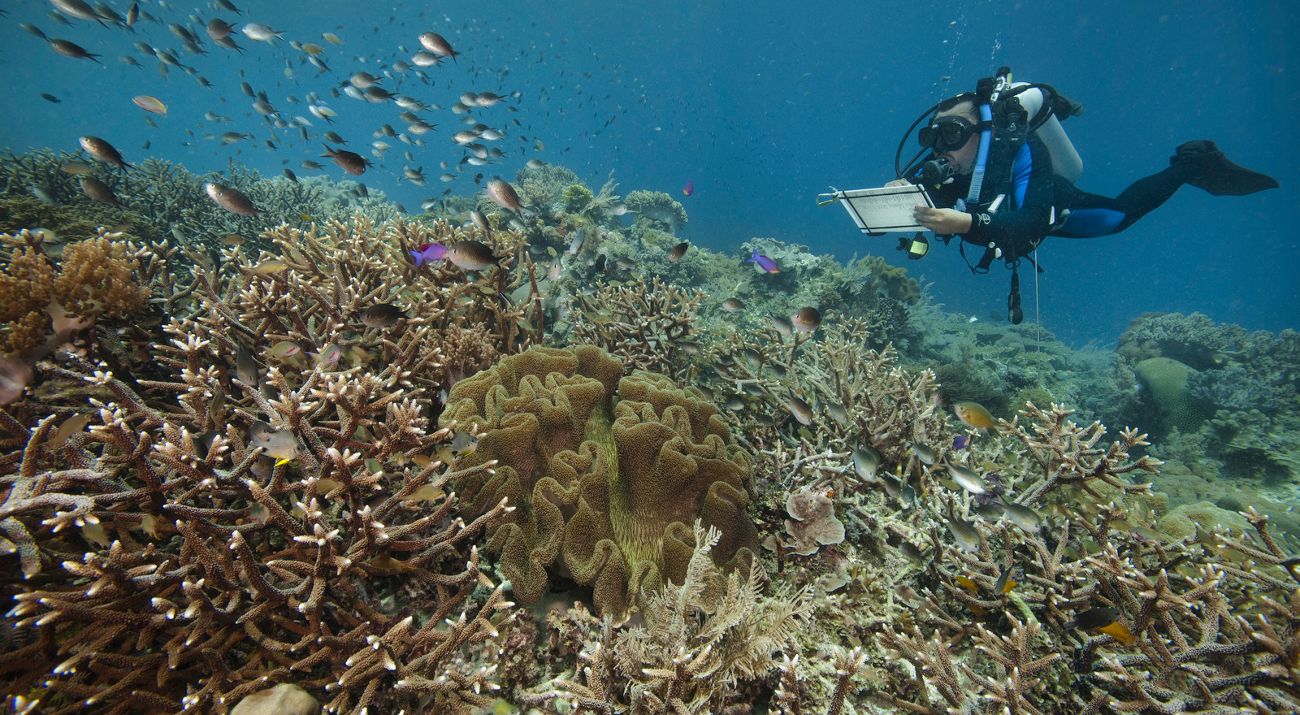Coral Reefs as Coastal Defenders
A new study shows where coral reefs are protecting people and GDP from powerful ocean waves.
When storms come rolling in across the ocean, they pummel coastlines with tremendous force. A changing climate means these storms will intensify in the years to come, as will the capacity of waves to gouge shores, flood adjacent lands and topple buildings.
Yet for thousands of miles of tropical coastline, nature has provided a remarkable form of protection: coral reefs.
These colorful, abundantly populated wonders are best known for their diversity of life, their copious seafood, and their draw to scuba-diving tourists. But they are also astoundingly durable and robust structures, built by tiny animals with calcium carbonate skeletons, which provide an important service to the coastlines standing behind them—they can absorb up to 97% of wave energy.
A new study published in Marine Policy, by Lauretta Burke, from the World Resources Institute (WRI), and Mark Spalding, from The Nature Conservancy (TNC), estimates that reefs offer protection to up to 5.3 million people and $109 billon in gross domestic product (GDP) per decade.
Part of what makes this study so relevant is the maps Burke and Spalding generated are at a much finer resolution than previous analyses, which allows users to view coral reefs down to the scale of 500-meter units and see where reefs provide the highest degree of protection for people, GDP and infrastructure.

“This level of detail means we can use this information in practical ways, like in the marine spatial planning we do to inform conservation strategies around the world,” says Dr. Spalding.
Marine spatial planning is a science-driven, inclusive process, which considers both human use and ecological data to facilitate the identification of priority areas for large-scale projects, like Blue Bonds for Ocean Conservation, and the optimization of coastal management for the benefit of both people and nature. More accurate data on where reefs shield people and infrastructure from destructive waves can help improve decision-making about which reefs to protect.
“We have already lost half of the world’s reefs, and scientists predict we could lose up to 90% if actions are not taken to protect them,” says TNC’s global reef lead, Dr. Elizabeth Mcleod. “Strategic and effective management strategies are vital to supporting reef health and recovery.”
Coral reefs are often selected for conservation based on their ecological significance, which may mean they are located in remote places, away from the more direct effects of human pressures like development and pollution runoff.
“We are failing ourselves as well as nature if we don’t also consider protecting the reefs that are located closer to humans,” says Spalding. “These are the reefs that protect us and provide for us in abundance. Let’s look after them.”
Global Insights
Check out our latest thinking and real-world solutions to some of the most complex challenges facing people and the planet today.
